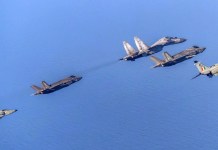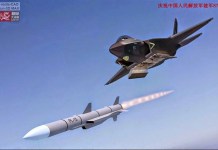With the first U.S. – India free trade agreement, President Donald Trump is going to make the most important trade deal of his administration since taking over the White House in 2015. This comes in the wake of his recent visit to India and at the end of his first term at the office.
India Set To Acquire Lethal Drones That Killed Top Iranian General – Qassem Soleimani
A strategic partnership between the United States and India, the world’s oldest and largest democracies, can potentially restore new order in the trade of the Indio-Pacific region.
The primary flaw in the approach of the United States is that while Washington is keen to make India a strategic partner, India, on the other hand, prioritizes prizes policy above all. As a result, they believe, that both the countries should forge a partnership that furthers their common interests without having to succumb to an alliance of any kind.
The same experts who believe that a traditional U.S. model will not be viable with India also believe that the basis of the American-led liberal post-war traditional foreign policy is a strong strategic concept. The two most recent ambassadors to India along with Richard Verma, a former U.S. envoy, agreed that Washington and New Delhi could become the guarantors of restoring liberal democratic order.
The sitting ambassador Kenneth Juster pushed the narrative further as he declared that both the countries can ensure a region that is free, open and where the rule of law and democratic principles are reflected.
Indian experts, on the other hand, believes that although the country is positioned likely to revive liberal order, the two countries should realize their vital interests and align the strategy accordingly. Taking a jibe at U.S. policymakers, the Indian experts urged them to come to terms with the fact that the liberal order is over and the new world of brewing cold war, power competition and spheres of influence should mean that India needs to be treated with a view of new geopolitical hardware and not on the basis of outdated policies.
In 2018, Henry Kissinger, one of the great operators of the liberal order, was quoted by the Financial Times saying, “It doesn’t necessarily mean that he (President) knows this, or that he is considering any alternative. It could well be an accident.” Kissinger was referring to the death of the liberal foreign policy that America had employed over the decades. He also mentioned that Trump could be remembered in the pages of history as the man who marks the end of an era and forces it to give up its old pretenses.
The “old pretense” Kissinger mentions is, undoubtedly, the faith of the elites on the liberal order of the foreign policy. With constant trade wars with China and co, the over-emphasis on “America First” foreign policy and the NATO bashing, the policy community believes that once the incumbent vacates the office, all will end up in the bin.
By waging wars in the Middle East when the United States was looking to solidify its order, Washington exported a disastrous financial crisis to the world and allowed China, its principal beneficiary, to become the second-biggest economic power in the world. The question New Delhi should pose is – Why should India become a lifeline to maintain the liberal order when the United States threw away its biggest opportunity to do the same?
In 2017, Alyssa Ayres pointed out that despite being the biggest democracy in the world, having the third-largest military by personnel strength, and the fifth-biggest economy, India is neither a permanent member of the UN Security Council and nor a member of the G-7.
Without favoring India to pursue it, using New Delhi as a pawn in order to prevent China to maintain a regional balance of power will matter to a greater degree than the integration into the above institutions.
Prospect of a Second Cold War?
An interesting analogy in 2020, in the wake of the much talked about the trade deal between India and the United States, is the Cold war analogy. In 2020, America faces a similar strategic triangle like the one in the 1970s. With China taking over the role of a challenger from the Soviet Union and India assuming to be China as a swing state, the two nations ruled by nationalistic and populist leaders, throwing away the perception of being controlled by foreign entities, are looking to have the edge over each other to hold onto to their strategic autonomy in the neighborhood.
Looking for a counter-strategy to push the Soviet hegemony, the then Mao led China to open its doors to America. As India worries over China’s rise, it is a no brainer that it will entertain a longstanding relationship with America.
The New Strategic Triangle
In 1978, President Nixon in his memoir warned about the possibility of creating a formidable enemy if it is not cultivated over the course of the next few years. The “it” being referred to is China, the strongest enemy America has ever encountered.
The central question of the navigating strategic triangle is the influence of Nixon’s legacy or the grand strategy of the United States that will either lead to the creation of a friend or a foe. If, by the liberal order, China has become the enemy that the United States doesn’t fancy, will a new order pave way for a new strategic partnership? One that is developing and in need of the support of the superpower of America. The answer lies ahead of Trump – India.
The article first appeared on the National Interest




